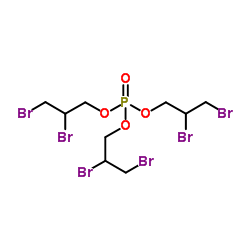| Structure | Name/CAS No. | Articles |
|---|---|---|
 |
Tris(2,3-dibromopropyl) phosphate
CAS:126-72-7 |
|
 |
Tris(2-butoxyethyl) phosphate
CAS:78-51-3 |